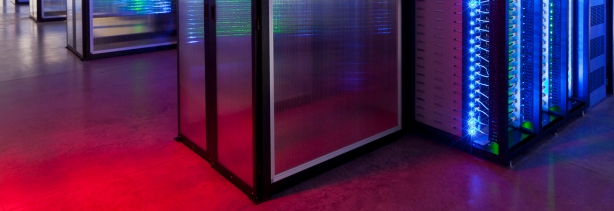Various large multinational leasing companies are on the verge of discontinuing their aged bespoke IT systems and implementing new, up-to-date and flexible software solutions. The selection of a new leasing system, particularly for international leasing companies, can lead to long-term global implementation projects. Choosing the right software solution and the right supplier is imperative.
Introduction
Many international leasing companies are now replacing current legacy systems with up-to-date, flexible and scalable software solutions. Many companies experience that the operational cost of current legacy systems is too high and the technology environment too cumbersome. This slows down the ability of leasing companies to realise back office integration of (international) acquired companies and fleets to set up new operations and products and to deal with market developments and regulatory changes. In some cases, the underlying technology is no longer supported which limits the possibility for further developments and enhancements.
This article provides an overview of the most important international leasing systems currently available. The information is based on an annual survey conducted by KPMG. The most recent survey was conducted between late 2007 and early 2008 and is intended for IT and financial management of leasing companies that are considering implementing a new back office system in multiple locations and countries.
Market developments
Internationalisation
Market developments in the leasing industry clearly impact the criteria that need to be addressed when selecting a new back office system (see Table 1). As in previous years ([Peet06] and [Wolt04]), the survey highlights leasing solutions that are used internationally. The international perspective remains a pivotal one, as leasing companies themselves continue to expand, especially into emerging markets.
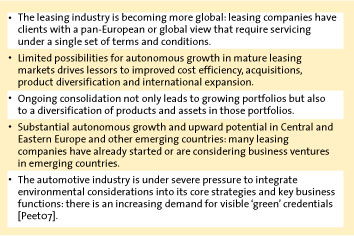
Table 1. Market developments in the leasing industry.
Asset and product diversification
As a result of the ongoing consolidation in the leasing industry, contract portfolios are growing and tending to become more diversified. This implies lessors require IT solutions capable of handling a multitude of assets and products. It is therefore useful to understand which assets and leasing products can be supported by the various IT solutions. Due to variance in products and assets, lessors may be forced to use a combination of more than one leasing system.
Asset and product diversification is not only driven by consolidation and acquisition. In mature markets lessors are seeking alternative sources of income by introducing new products or related services. As a consequence, many leasing companies are offering an array of products, ranging from small-ticket financial leases to complex finance arrangements or auxiliary services. Traditional boundaries between leasing sub-sectors are becoming blurred. Automotive lessors are offering financial leases and consumer finance products. Equipment lessors are offering additional services related to the maintenance of the asset.
This trend is reflected in the functionality of leasing solutions. CHP, Fimasys and NetSolCQ have all enhanced their finance and equipment lease solutions with fleet and service management functionality. SAP is also seeking to adapt its finance lease solution to the requirements of the automotive leasing industry. Solutions offered by Linedata Services, Cassiopae and Northern Arch are able to handle a large variety of assets – ranging from small-ticket assets to real estate. Some of the leasing solutions included in the survey are suitable for handling asset securitisations (such as collateralised debt obligations) and their complex back office processes.
Leasing products include an asset financing arrangement. The financing arrangement can range from plain vanilla small-ticket financing to highly complex financing arrangements such as asset securitisations. The complexity of the financing arrangement impacts the required system functionality. Another aspect of leasing products that bears consequences for the supporting IT solution is the complexity of the back office processes. Due to a multitude of services, back office processes for full service automotive leasing are generally complex and labour-intensive. Back office processes can also be demanding due to the accounting, management of collaterals, or related cash flows. Securitisations are an example of this: the accounting for the special purpose vehicle, automated cash flow waterfall calculations as well as managing the assets portfolio all need highly specialised back office functionality. Figure 1 provides an overview of the various products that can be handled by the software solutions participating in the survey. One axis represents the complexity of the financing arrangement, whilst the other depicts the complexity of the contract management processes (comprising service management and back office processes).
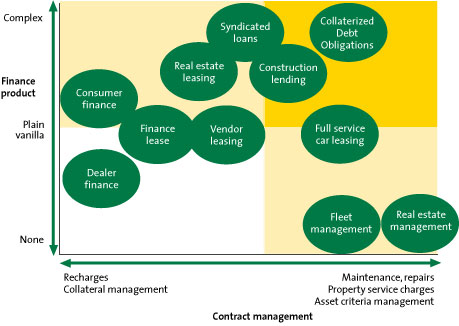
Figure 1. Leasing and asset finance products.
Local suppliers
With expansion to immature leasing markets, international leasing companies have also initiated or acquired small operations. The limited size of such locations renders the implementation of fully-fledged and sophisticated IT solutions cost-ineffective. Using local suppliers can also overcome practical problems related to different languages or time-zones. Local solutions are also tailored to local business practices and legislation – things that may be difficult and costly to realise in a multinational system ([Peet04]). Consequently, international lessors have developed clustering strategies whereby local – and generally simpler – systems are implemented for small sites.
Local suppliers also provide suitable and cost-effective solutions for local leasing companies. For instance, in the mature leasing market in the Netherlands, Dutch local supplier CarWise has well over a hundred implementations, including a fleet of 5,500 vehicles. ADH-Soft and TotalSoft, based in Poland and Romania respectively, have not only managed to realise a considerable number of implementations in their home markets, but have also succeeded in expanding into several other Central and Eastern European countries. In summary, local software suppliers remain a force to be reckoned with and hence several have been included in this year’s survey.
Overview of suppliers and solutions
Table 2 and 3 summarise the suppliers participating in the survey in both automotive and equipment or finance leasing market segments. ADH-Soft, CHP Consulting, Fimasys, NetSolCQ and TotalSoft are included in both tables as they offer solutions for both segments.
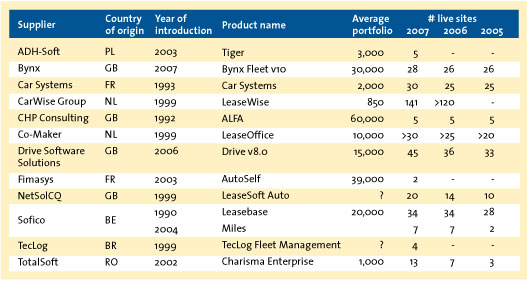
Table 2. Automotive leasing – Live site Statistics.
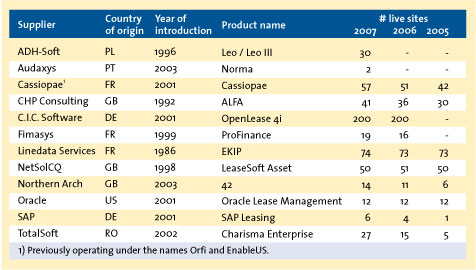
Table 3. Equipment and finance lease – Live site statistics.
When assessing the number of live sites and implementations realised over the last three years, it can be concluded that market consolidation has had a clear impact on some of the suppliers. The number of new live sites just exceeds the number of phased-out implementations. In addition, the total number of new implementations in the mature leasing markets is growing only slightly. Many of the new implementations have been realised for leasing companies entering new or emerging markets. Most of the suppliers with the largest growth figures have benefited from others offering systems based on older technology or who are in the process of developing a new solution.
Distinguishing features
Most of the international leasing software currently on offer is well developed and functionally mature. This means that the systems’ functionality covers the aspects most relevant to the international leasing industry. However, it can be a challenge to differentiate adequately between the different mature solutions and their suppliers. Consequently, in the software selection process, Requests for Information (RfIs) or Requests for Proposals (RfPs) containing a large number of generic questions are becoming less useful. RfIs or RfPs need to be specifically tailored by means of client-specific case studies. These are an effective means of determining the differentiating factors between the short-listed solutions. The typical distinguishing factors to consider are outlined in Table 4. Some of them are discussed in more detail below.
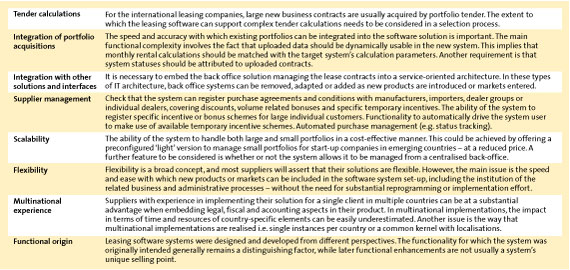
Table 4. Key criteria for selecting leasing software systems. [Click for larger image]
The integration and loading of acquired portfolios
UK automotive lease software suppliers Bynx and Drive Software Solutions have developed a module that has been specifically designed to upload acquired contract portfolios. For example, Drive is able to do the following:
- A sample quotation is generated using specified system parameters and customer-specific parameters when contracts are uploaded.
- The system also recreates a monthly rental – which reconciles with the source system to ensure that the billing values match the old system.
- The loading facilities automatically generate depreciation schedules, the maintenance schedule and the budget.
- Critical contract statuses are assigned to the loaded contract. Furthermore, historic changes related to contract recalculations can be uploaded.
The result of a full contract upload should be an accepted quotation, a completed acquisition and delivery process, as well as an activated contract rolled up to the date of loading. This functionality is both useful for mergers and acquisitions of leasing companies and for tender processes by lessees. When lessees are seeking a new lessor or fleet manager, uploading functionality can significantly reduce the time-to-market of the transferred portfolio. Finally, during the initial implementation phase, the functionality can speed up and control the migration of historic data.
Supplier management
Supplier management and full automation of the purchase process cycle and the service, maintenance and repair discipline are essential to mature leasing markets where price competitiveness is the dominant strategy. UK suppliers such as Ebbon Dacs with its Leaselink system and Epyx with 1Link and the Dutch ROB Net have specific tools to support this and are used as add-ons to existing leasing systems. In general the features to support supplier management activities are limited in the current generation of leasing systems.
Supplier management is an area where software vendors can learn from systems like SAP, with its integrated features for strategic sourcing, contract negotiation, contract management as well as tactical and operational functionality for supplier qualification and evaluation. These features are required to support adequately the highly competitive mature markets across Europe.
Scalability
Scalability is another distinguishing factor – particularly for small-ticket leasing and automotive leasing. ALFA, Cassiopae, OpenLease and ProFinance are all systems that presently manage portfolios of 100,000 assets or more. Although some suppliers claim that their system is fully scalable to an unlimited number of contracts, this can be difficult in actual practice. If a system is to manage the assets of the largest leasing companies, several steps are needed. Some of the technical issues to be dealt with are database sizing, server clustering, the organisation of technology tiers, load balancing strategies, performance tuning, and the optimisation of batch runs.
But functional issues must also be considered. Growing portfolios are generally characterised by both product and asset diversification. The product templates of CHP’s ALFA system provide the capacity to configure new products, authorise them to particular sales channels, and take them to market rapidly. To reduce the operational costs of increasing numbers of contracts, the system provides stringent role-based access which is governed by automated workflow. This should ensure that, as volumes grow, system users focus on the appropriate functional area and are guided through a systematic, auditable business process. Workflow KPIs also ensure that feedback on process bottlenecks can be used to continually review and optimise process lead times.
Flexibility
Another key factor for the international use of a system is its flexibility. Flexible parameter settings and configuration set-up are needed to tailor systems to regional legislative differences and local market conditions. The Belgian supplier Sofico’s full-service automotive leasing system Miles is a good example of a flexible system. It has a flexible database structure and allows users the freedom to set up products and services. For example, users are able to define formulas for rental calculations. This flexibility is beneficial when setting up different products in a multinational environment. Leo III and Tiger, provided by ADH-Soft, offer system users the flexibility to define screens and workflow and to realise these in a user-friendly and intuitive manner.
In the international automotive leasing sector, Sofico faces competition from UK suppliers Bynx and Drive Software Solutions. Both have implementations in more than ten countries (see Table 5). Dutch supplier Co-Maker is also about to undertake several implementations throughout Europe. In order to grow further in the European market, the supplier has recently sought an alliance with Total Specific Solutions, a large Dutch IT company. The equipment and finance leasing industry shows a similar trend: Cassiopae, Linedata Services and NetSolCQ all have impressive international track records with client bases across more than ten countries (see Table 6).
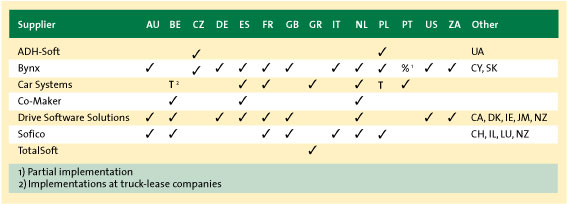
Table 5. Automotive Leasing – International experience.
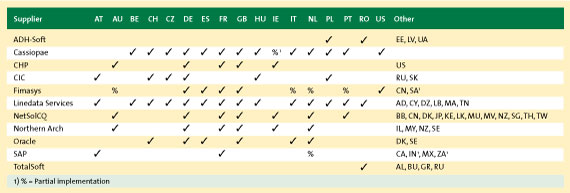
Table 6. Equipment & Finance Leasing – International experience.
To assess the multinational implementation capability of the various suppliers, the suppliers were asked to provide details on the number of customers across multi-country implementations (see Table 7). While this may not demonstrate a common system set-up with local variations, it does show which suppliers have gained experience in dealing with the larger, multinational companies and local country specifics. In this overview, Cassiopae, Fimasys, Linedata Services, Sofico and relative newcomer Northern Arch stand out.
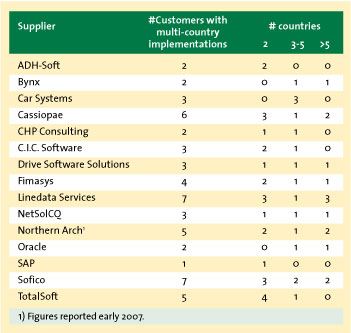
Table 7. Multi-country experience.
Functional origin
CHP Consulting’s ALFA and Linedata Service’s EKIP were originally designed for financial leasing products. They are able to handle sophisticated functionalities related to asset financing, such as financial instruments (swaps), collaterals or securities, floating interest rate contracts and revolving credits. LeaseOffice was developed for the Dutch automotive leasing market and contains comprehensive functionality for claims handling and fuel management. Drive was originally intended for commercial fleet management – still a well-developed functional feature of the system. Fimasys’s ProFinance solution is specifically equipped to accommodate stock financing with embedded features for short-term credit lines, spare-part funding and financing new, demo and used vehicle stocks.
Some IT solutions for equipment and finance lease were designed for the real estate leasing industry. Although real estate leasing can be considered as a specific form of big-ticket leasing, some systems have enhanced their functionality to cover construction lending and real estate management. By offering this functionality, French supplier Cassiopae has crossed-over to an entirely different industry of specialised real estate management software, including Manhattan (Raindrop Information Systems), REMS (Kalshoven Automation) as well as the real estate management modules offered by SAP and Oracle.

Table 8. Equipment and finance lease – Big-ticket Features. [Click for larger image]
As mentioned above, securitisations require complex back office functionality with respect to accounting, cash flow management and projections as well as collateral management. It is common to outsource the back office processes to trust offices. However, some of the suppliers of equipment and finance leasing software offer functionality supporting securitisations. Table 9 provides an overview of the structured finance features of the various suppliers.

Table 9. Equipment and finance lease – Structured Finance. [Click for larger image]
Conclusion
The functionality and multinational use of leasing software evidently echo market developments and the needs of the industry. Solutions are being internationally applied to an increasing extent as leasing companies expand or replace their current bespoke solutions. Product diversification drives various sectors towards each other, a trend that can be seen in the functionality of the different leasing solutions. Equipment and finance solutions have been enhanced to handle services, whilst full service automotive lease solutions also support consumer finance products in many cases.
Leasing companies that are contemplating a selection of a new back office system for multinational use should focus on the distinguishing factors of the systems on offer. Because most of them are sophisticated and functionally mature solutions, most generic functionality is covered.
Although the selection of a single back office system for all international operations is conceptually attractive, it may be difficult to realise this in real-life practice. Leasing companies should also consider the need for adopting a clustering strategy whereby multiple back office systems are selected – either to accommodate specific products or specific market conditions. For smaller operations or portfolios in particular, implementing a fully-fledged leasing solution may not be cost-effective. In such cases, small local software suppliers should not be overlooked.
References
[Peet04] Drs. E.M. Peeters RE and drs. E.J. Wolters RE RA, Can one size fit all?, Leasing Life, December 2004.
[Peet06] Drs. E.M. Peeters RE, drs. E.J. Wolters RE RA and C.F.J. Hoffman RE RA, Leasingsoftware: een international gezelschap op een internationaal speelveld, Compact 2006/3.
[Peet07a] Drs. E.M. Peeters RE and B. van Bergen, Key steps to assess, measure and reduce your carbon footprint, Motor Finance, December 2007.
[Peet07b] Drs. E.M. Peeters RE and B. van Bergen, The European green tax picture, Motor Finance, October 2007.
[Wolt04] Drs. E.J. Wolters RE RA and drs. E.M. Peeters RE, Softwarepakketten voor equipment en automotive leasing: een inventarisatie, Compact 2004/4.
